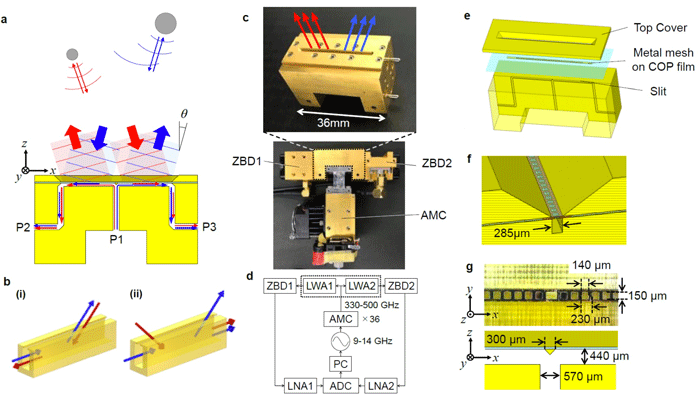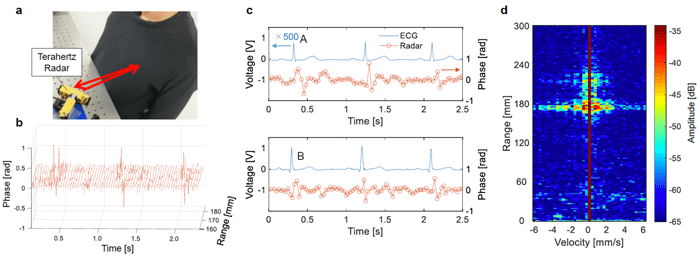Terahertz radar enables contactless heartbeat measurement through clothing
-Multifunction integrated on a terahertz waveguide; from beam steering to mixing-
February 13, 2020
National Institute of Information and Communications Technology
Keio University
1.Main points of research
- The use of terahertz waves for radar enables higher resolution than conventional radio waves such as millimeter waves, and higher transmissivity than light.
- The lack of low-loss materials suitable for manufacturing phase shifters and circulators has prevented integrating radar systems in the terahertz range.
- By redesigning the waveguide structure and the frequency sweep scheme, terahertz radar was built without using phase shifters and circulators.
- As a proof of concept of practical applications, contactless heartbeat measurement by detecting a minute displacement of the surface of a person’s chest through clothing was demonstrated.
2.Background of research
3.Summary and results
4.Future developments

[Click picture to enlarge]

[Click picture to enlarge]
Details of original paper
Inquiries about research
MONNAI Yasuaki (Assistant Professor)
Department of Applied Physics and Physico-Informatics
Faculty of Science and Technology
Keio University
Tel: +81-45-566-1597
E-mail:






















KASAMATSU Akifumi (Executive Researcher)
Frontier Research Laboratory
Advanced ICT Research Institute
NICT
Tel: +81-42-327-6824
E-mail:















Inquiries about press release
MURAKAMI
Office of Communications and Public Relations
Keio University
Tel: +81-3-5427-1541
Faxl: +81-3-5441-7640
E-mail:




















HIROTA
Press Office
Public Relations Department
NICT
Tel: +81-42-327-6923
E-mail:





















